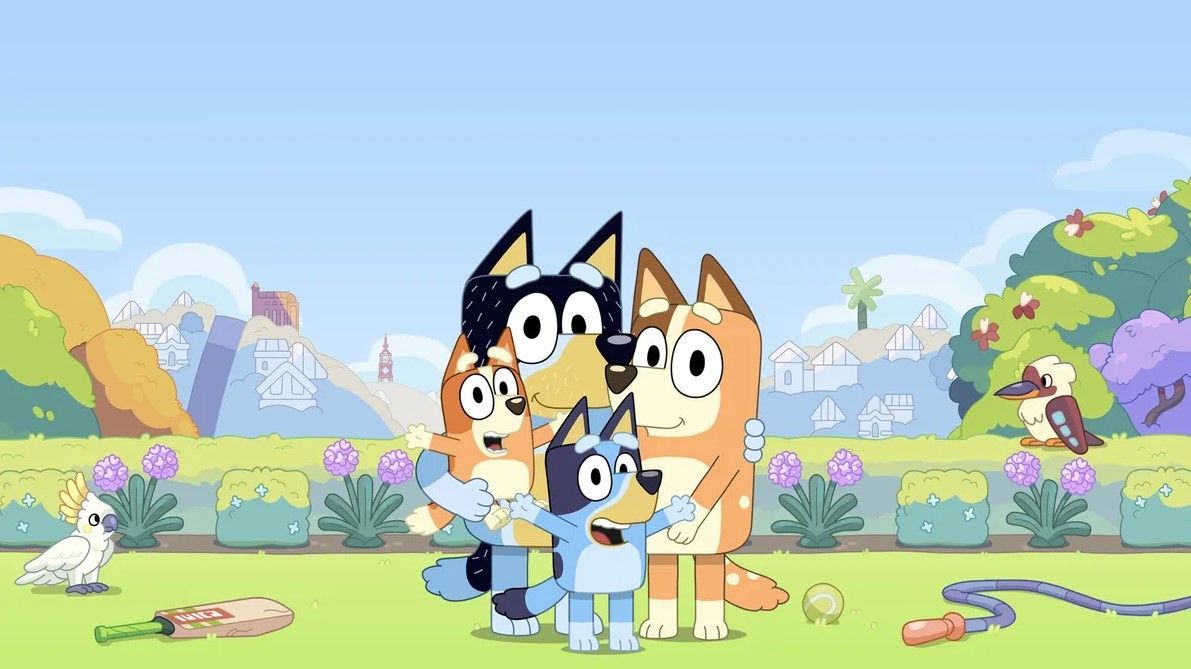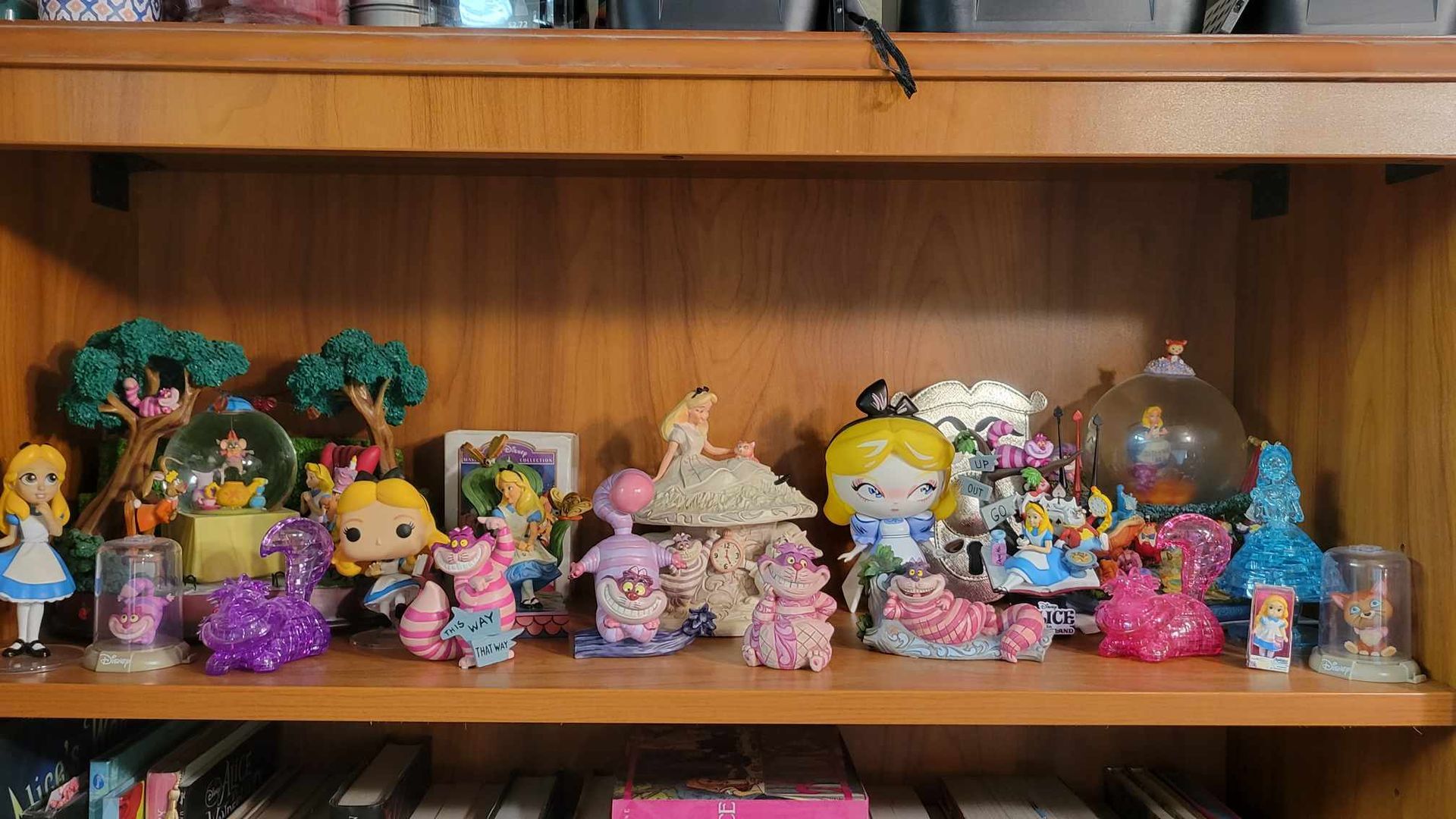Craig D. Barton is a creative consultant, editor, and writer, having written for and consulted on multiple Disney Editions books and various other projects. Besides being a self-described "DisNerd," Craig is an advocate for all arts, loves travel, movies, making his own eclectic music playlists, and, most of all, spending time with his family. Craig currently resides in Avondale, AZ with his lovely wife, quirky daughter, and neurotic yet lovable dog.
1934 - Topping Pigs with Ducks and Feature-Length Films
by Craig D. Barton
"The Walt Disney Company: 100 Years in 100 Weeks," is the brainchild of Craig D. Barton, presenting weekly posts on the history of the Walt Disney Company. Each post will cover a specific year in Disney's history, featuring essays, shared articles, guest authors, and yearly timelines, all leading up to the company's 100th Anniversary on October 16, 2023. Previous posts in the series can be viewed here..
Be sure to join us every Friday for the newest installment of "The Walt Disney Company: 100 Years in 100 Weeks!"
“In those days, we were like the bumblebee who didn't know how to fly—but we were flying anyhow. We kept fooling around with the Silly Symphonies until we came up with The Three Little Pigs. I could not possibly see how we could top pigs with pigs. But we tried, and I doubt whether one member of this audience can name the other cartoons in which the pigs appeared.”
– Walt Disney, “Showman of the World” acceptance speech, 1966
Walt Disney had heard it before with the advent of his Silly Symphonies. “People don’t want this. MORE MICE.” Although Mickey was a runaway success, Walt didn’t rest on that one character, and pushed forward with his Symphony series; once again, he proved he knew what would entertain the public. Despite the success of “The Three Little Pigs,” Walt felt that a sequel to an adapted fairy tale was not the path he wanted to take. In fact, when the New York Times ran a “Gleanings From Studios” article in June of 1934, they were quick to note that while there were two new stars (Peter Pig and Donald Duck) introduced in the latest Symphony, “The Wise Little Hen”: “Mr. Pig is not related to the Three Little Pigs.” Despite the attempt to distance itself, given the comparative popularity of the two new characters, Walt was right: You can’t top pigs with pigs. However, a temperamental duck has serious staying power.
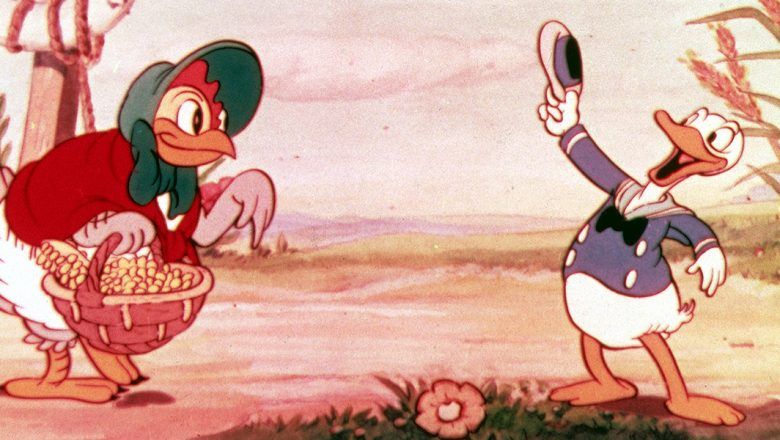
Never too busy to sing and dance, Donald's bellyache prevented him from helping plant the corn. Oh, Donald....
In the same June 3rd issue that heralded the arrival of Mr. Pig and Mr. Duck, The New York Times also ran an extensive piece on Walt Disney, his achievements, and work ethic. Titled, “Now Mickey Mouse Enters Art’s Temple: He and Minnie Are Acclaimed as Classics by the Learned, but Walt Disney Creates Them With the Aid of Careful Mathematical Calculations, and Is Intent Chiefly on Earning a Living,” the article talked about Walt and the company’s successes with Mickey and Minnie, as well as the Silly Symphonies.
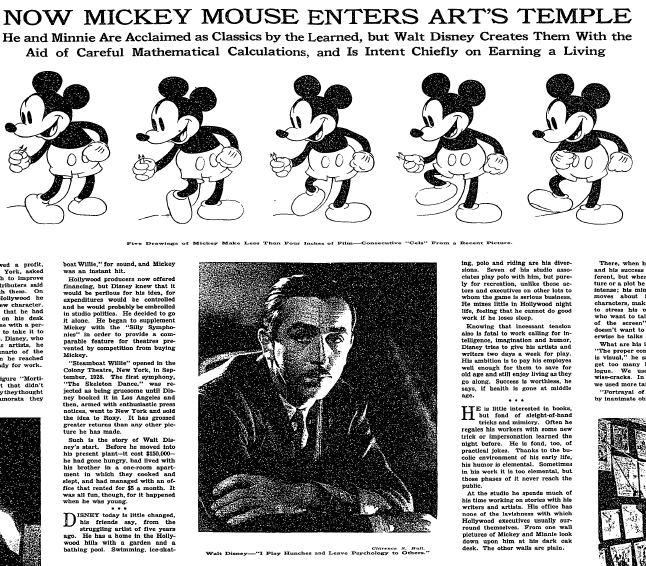
This article is probably one of the first to give the public a good background story on Walt and the inner workings of the company. It is viewable in full with a subscription to the New York Times.
Tucked into the article, was an explanation of Walt’s forward-thinking philosophy on production and quality. With this explanation came an announcement of something new coming from the Walt Disney Company:
“Disney is thinking much about his coming ‘Snow-White’ venture. He says: ‘We will continue to follow our rule to put every cent of profit back into the business, for we believe in the future and what it will earn for us. I don’t favor much commercialization. Most producers think it is better to get while the getting is good. We have not operated that way. Because we own our business we can dictate our policy. I am working toward longer films. We have made no profit from “Pigs” because of the expense of making prints to supply the demand. Besides, we sold it at the black-and-white rate, which is one-third that of color. We shall profit this year, though, for we shall get a higher rental for our films. We have been asked to make “Alice in Wonderland” with Mary Pickford. We have discouraged the idea, for we aren’t ready for a feature yet. A feature picture will take eighteen months to make. We are now working on such a story. We will use a full symphony orchestra and fine singers. It will probably cost a quarter of a million. We’ve got to be sure of it before we start, because if it isn’t good we will destroy it. If it is good, we shall make at least a million.”
Though the story had begun development at the studios a few months earlier, this was the first public announcement of such an advantageous idea: a feature full length cartoon! Immediately, many in the industry questioned if Walt and his team of animators, top-notch though they were, would be able to pull off such a feat. And a budget of a quarter million dollars would be sure to break the studio! Rumblings of “Disney’s Folly” had just begun, and such outsider misgivings would hang over the Walt Disney Company for the next few years as development continued.
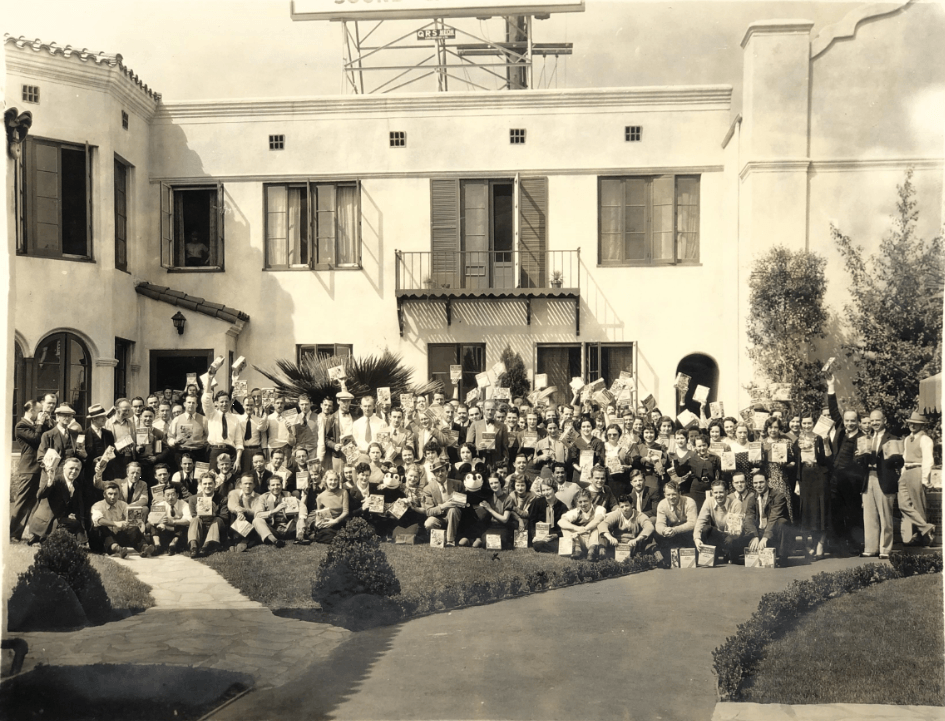
Walt Disney and staff outside of the Disney Studio, 1934.
If there had been doubts among the staff at the studio, a meeting on October 30th, 1934 would be responsible for changing their minds. After dinner, the staff assembled on the sound stage to listen as Walt said, “Let me tell you a story.” For the next three-plus hours, Walt told his story – the “Disney version” - of the classic Brothers Grimm fairy tale, “Little Snow-White.” What exactly happened during that story telling session is lost to time, and no notes or records are retained from that meeting. According to film historian J.B. Kaufman, “Soon enough the studio would begin its practice of documenting every story conference in detail with a verbatim transcript, and scores of such transcripts would be generated during the years of work on Snow White.” Despite the lack of documents from that particular night, however Kaufman notes, “One thing is certain: Walt’s talk had a powerful effect on his listeners. In later years, their eyewitness accounts described the profound inspiration they drew from his performance.”
Following a musical blockbuster performance from “The Three Little Pigs” the previous year, Donald Duck gave performances in “The Wise Little Hen” and “Orphan’s Benefit” that would elevate his star power for years to come (Sorry, Mr. Peter Pig!). But the most important performance of the year would come from the founder of the Walt Disney Company, on a sound stage off-limits to the general public.
In just three short years though, the general public would discover the impact and end result of that performance. And the world of animation would once again never be the same.
1934
- Walt Disney Studio begins early development of "Snow White and the Seven Dwarfs."
- "The World Owes Me a Living" is heard in the Silly Symphony "The Grasshopper and the Ants," sung by Pinto Colvig, who would also become the voice of Goofy. "The World Owes Me a Living" would, interestingly enough, become Goofy's theme song, instrumentally introducing his early solo outings.
- Donald Duck makes his debut in Silly Symphony "The Wise Little Hen."
- "Snow White" is first mentioned to the public in New York Times article
- Walt presents his vision and story of Snow White in his presentation to studio staff.
1934 Animated Releases:
Silly Symphonies - The China Shop - January 13
Mickey Mouse - Shanghaied - January 13
Mickey Mouse - Camping Out - February 17
Silly Symphonies - The Grasshopper and the Ants - February 24
Mickey Mouse - Playful Pluto - March 17
Silly Symphonies - Funny Little Bunnies - March 31
Silly Symphonies - The Big Bad Wolf - April 21
Mickey Mouse - Gulliver Mickey - May 19
Silly Symphonies - The Wise Little Hen - June 9
Mickey Mouse - Mickey's Steam Roller - June 16
Silly Symphonies - The Flying Mouse - July 14
Mickey Mouse - Orphan's Benefit - August 11
Silly Symphonies - Peculiar Penguins - September 8
Mickey Mouse - Mickey Plays Papa - September 29
Silly Symphonies - The Goddess of Spring - November 3
Mickey Mouse - The Dognapper - November 10
Mickey Mouse - Two-Gun Mickey - December 29
Author's Note - For the second post in a row, I have mentioned the "Disney Version" of Disney's animated features based on fairy tales, folk tales, and fables. As stories are handed down from generation to generation, each iteration tells an altered story, adapted to fit the time period, cultural setting, and/or format in which it is being told. For a wonderful and concise original telling of many of these stories, I highly recommend C.W. Gross's "Yesterday, Tomorrow, and Fantasy: The Original Fairy Tales That Inspired Disney’s Classic Films," available on Amazon now. Along with the original versions of these tales, Gross also provides commentary before each one, inviting the reader to discover these stories anew. For fans of both originals and "Disney Versions," this compilation is a must-own!

*"The Walt Disney Company: 100 Years in 100 Weeks" is a project conceived by Craig D. Barton and presented by Communerdy. It is in no way affiliated with The Walt Disney Company, and any opinions presented within its content are that of the author(s). For more updates, follow us on https://www.instagram.com/disney100in100/ .


